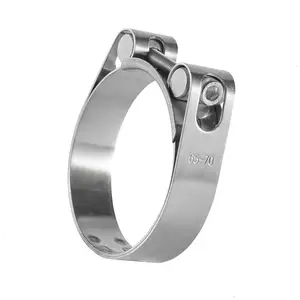
All categories
Featured selections
Trade Assurance
Buyer Central
Help Center
Get the app
Become a supplier












Alibaba.com cung cấp một số loại kẹp tưng bừng để bán bởi các nhà cung cấp đáng tin cậy, đảm bảo các sản phẩm chất lượng cao với kết quả vượt trội. Chúng được chế tạo để sử dụng lâu dài, đảm bảo độ bền và hiệu suất tối ưu. Các sản phẩm được tìm kiếm phổ biến nhất là kẹp tưng bừng, nhôm thỏi, kim loại và các sản phẩm kim loại khác. Vì chúng được sử dụng cho các ứng dụng khác nhau, chúng có sẵn ở các kích cỡ khác nhau.
kẹp tưng bừng là dạng kim loại rẻ tiền nhất được sử dụng cho các ứng dụng thông thường. Nó là một kim loại tuyệt vời liên kết mạnh mẽ với thủy tinh và trong suốt khi trưởng thành. Những vật dụng này tạo ra một lớp hoàn thiện như gương cho cửa sổ của các tòa nhà cao tầng. Chúng có một số lợi ích vì chúng không bị xỉn màu nhanh như bạc và có thể có nhiều hình dạng. Indium có thể được sản xuất dưới dạng hạt, thanh, bột, viên và cũng có thể ở dạng hợp chất.
Mỗi sản phẩm đều được thiết kế để đạt hiệu suất tối ưu, đảm bảo độ bền. kẹp tưng bừng Được sản xuất bằng nguyên liệu chất lượng và công nghệ tiên tiến. Những sản phẩm tầm cỡ cao thể hiện hiệu suất vượt trội. Alibaba.com cung cấp nhiều lựa chọn về phôi như không hợp kim, hợp kim và indium. Danh mục toàn diện với thông tin chi tiết về từng sản phẩm luôn có sẵn cho người mua hàng.
Các tùy chọn từ bình dân đến cao cấp kẹp tưng bừng, mọi người mua sắm đều có thể tìm thấy một sản phẩm với mức giá phù hợp với chúng. Với nhiều nhà cung cấp trên toàn cầu, Alibaba.com là nơi tuyệt vời để tìm kiếm những mặt hàng phù hợp nhất với nhu cầu của người mua sắm. Chúng có sẵn với giá hàng đầu trong ngành và hứa hẹn mang lại hiệu quả tối ưu.